
THE SOUTHERN ITALIAN region of Puglia rolls across seemingly endless hills of golden grain that stretch in every direction. Bordered by the azure waters of the Adriatic and Ionian Seas, this area at the heel of Italy is home to the bustling ports of Bari and Monopoli. Yet away from the coast and past the fortified medieval cities of Ostuni and Alberobello, the sunbaked landscape begins to feel uninhibited. Moving deeper into Puglia’s interior, the towns give way to single farmhouses, which, in turn, disappear, leaving only the gently waving rows of wheat that guard an agricultural legacy going back more than 2,000 years.
At the end of a two-track road that winds around ravines and through cultivated fields of wheat and chickpeas, a line of square trenches cuts deep into the rich soil. Under neat rows of modern crops lies the ancient site of Vagnari, named after an eighteenth-century Masseria, or farmhouse, that sits abandoned nearby. Here, between the first and early fourth centuries a.d., a succession of Roman emperors owned a 6,000-acre farming estate, the remains of which are only now beginning to be uncovered. Although such imperial farming estates are known to have existed throughout the empire, Vagnari is the first to be excavated, providing new insight into how a rural farm supplied emperors’ needs and provided them with a source of revenue. “Whether in Italy, North Africa, or anywhere else in the Roman Empire, imperial estates are grossly under-explored,” says archaeologist Maureen Carroll of the University of Sheffield. “We have ancient written evidence, such as inscriptions and historical texts, but that’s all that anybody has ever concentrated on. The only way to learn more is to excavate.”
This story is from the {{IssueName}} edition of {{MagazineName}}.
Start your 7-day Magzter GOLD free trial to access thousands of curated premium stories, and 9,000+ magazines and newspapers.
Already a subscriber ? Sign In
This story is from the {{IssueName}} edition of {{MagazineName}}.
Start your 7-day Magzter GOLD free trial to access thousands of curated premium stories, and 9,000+ magazines and newspapers.
Already a subscriber? Sign In
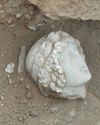
Digs & Discoveries - A Friend For Hercules - Archaeologists discovered a finely carved head depicting Apollo, god of the sun, music, and poetry.
While digging at the crossroads of the two main streets in the ancient city of Philippi in northern Greece, archaeologists discovered a finely carved head depicting Apollo, god of the sun, music, and poetry.
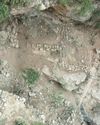
Digs & Discoveries - A Fortress Sanctuary - A sprawling 2,000-year-old fortress in the Zagros Mountains of Iraqi Kurdistan appears to have included a sanctuary dedicated to the ancient Persian water goddess Anahita.
A sprawling 2,000-year-old fortress in the Zagros Mountains of Iraqi Kurdistan appears to have included a sanctuary dedicated to the ancient Persian water goddess Anahita.
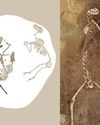
Like Cats And Dogs – Archeologist fund the skeleton of a male Eurasian lynx (Lynx lynx), a notoriously shy creature.
Оn the periphery of Zamárdi, an ancient lakeshore settlement in west-central Hungary, archaeologists uncovered a nearly five-foot-deep beehive-shaped pit with the skeletons of four adult dogs buried in successive shallow layers.
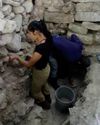
A Dynasty Born In Fire- How an upstart Maya king forged a new social order amid chaos
At the beginning of the Terminal Classic period (ca. A.D. 810-1000), many of the great kingdoms of the southern Maya lowlands-among them Tikal, Palenque, and Calakmul-were being abandoned or collapsing. For many years, scholars have assumed that most, if not all, the other kingdoms across the Maya world must have also been in steep decline.
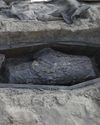
Medical Malfeasance - Archaeologists uncovered two coffins during excavations of a nineteenth-century cemetery in Quebec City that provide evidence of the illicit practice of diverting corpses for the study of human anatomy.
Archaeologists uncovered two coffins during excavations of a nineteenth-century cemetery in Quebec City that provide evidence of the illicit practice of diverting corpses for the study of human anatomy. Starting in 1847, medical students were required to have practical experience studying human anatomy, but legal options to procure cadavers were limited
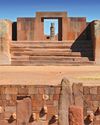
RISE AND FALL OF TIWANAKU
New dating techniques are unraveling the mystery of a sacred Andean city
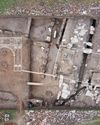
Making a Roman Emperor
A newly discovered monumental arch in Serbia reveals a family's rise to power in the late second century A.D.
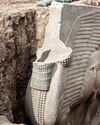
The Assyrian Renaissance
Archaeologists return to Nineveh in northern Iraq, one of the ancient world's grandest imperial capitals

Java's Megalithic Mountain
Across the Indonesian archipelago, people raised immense stones to honor their ancestors
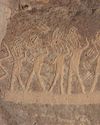
THE SONG IN THE STONE
Located in a desert gorge in southern Peru, Toro Muerto is one of the richest rock art sites in South America. It includes at least 2,600 boulders bearing petroglyphs, many featuring figures known as danzantes who appear to be dancing.